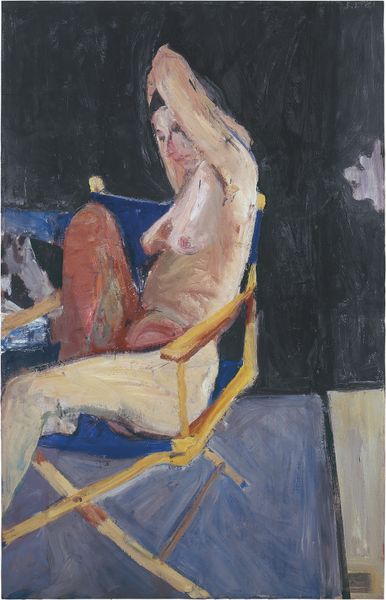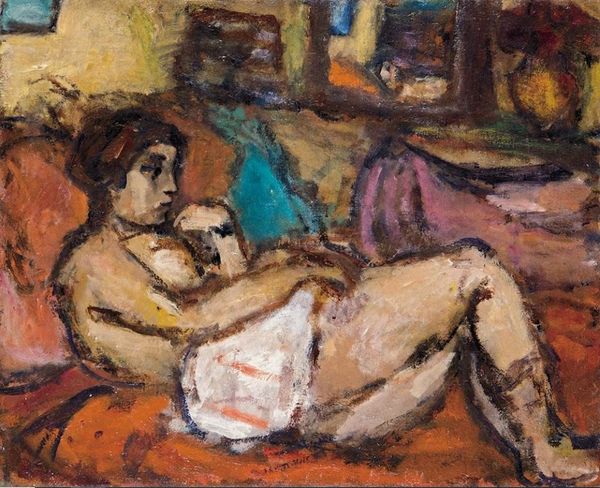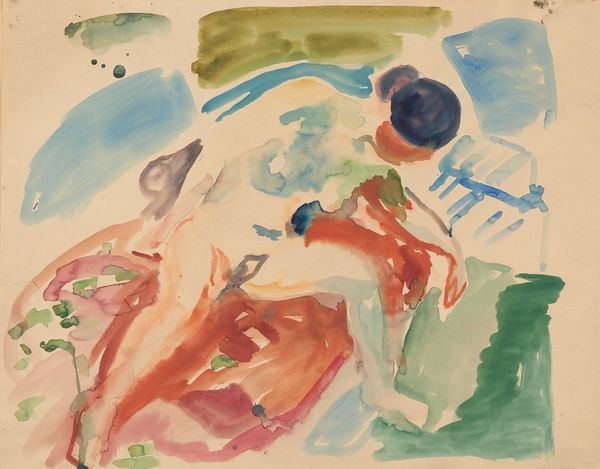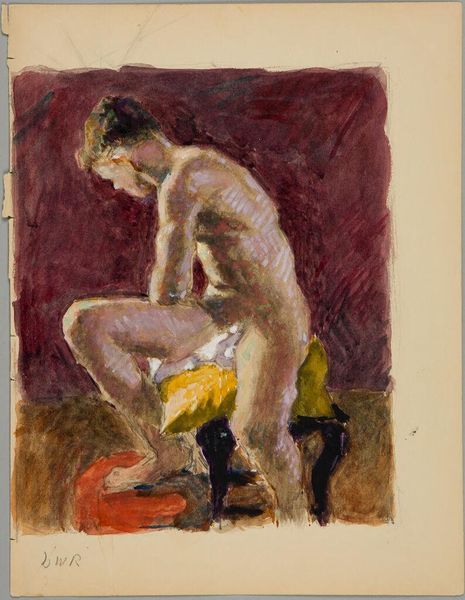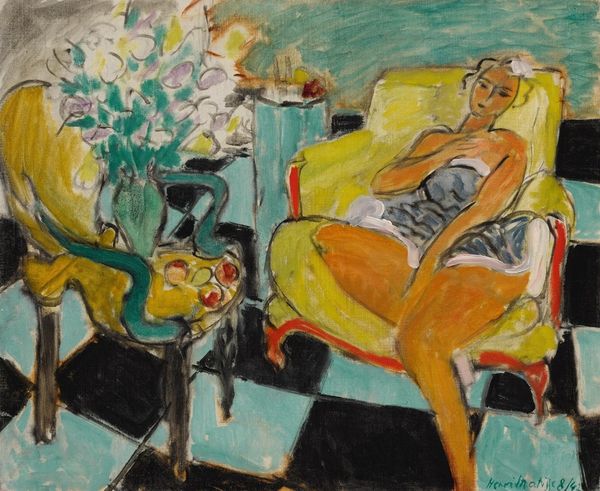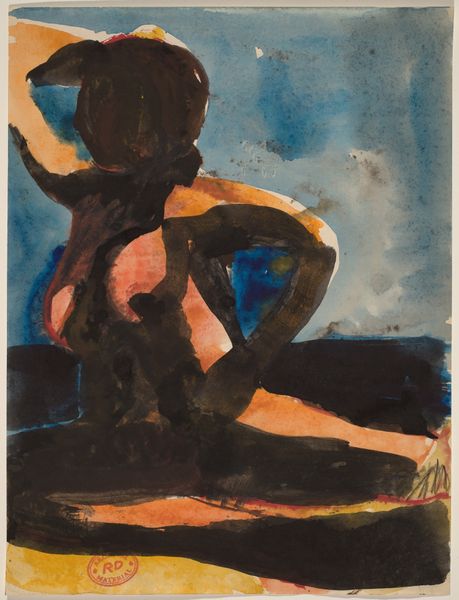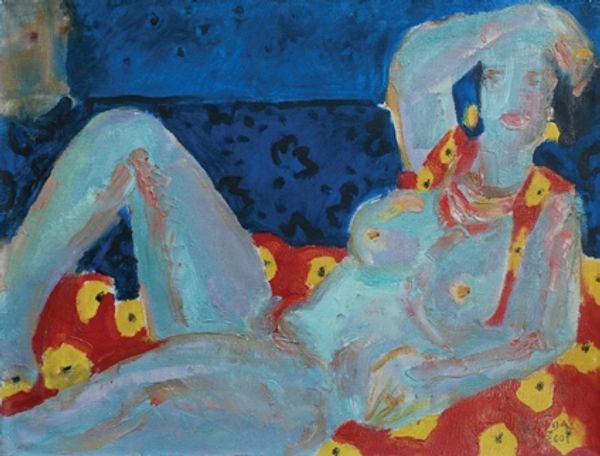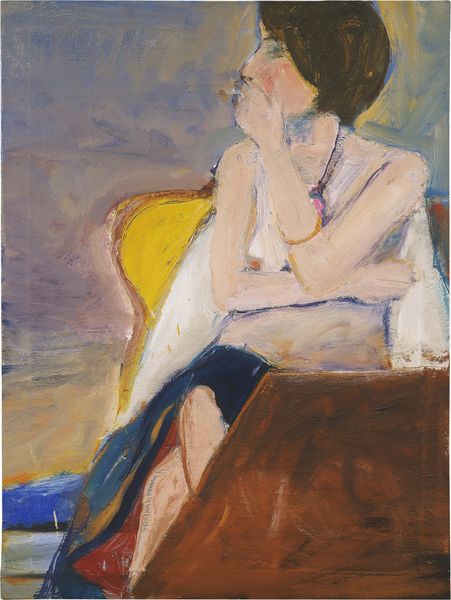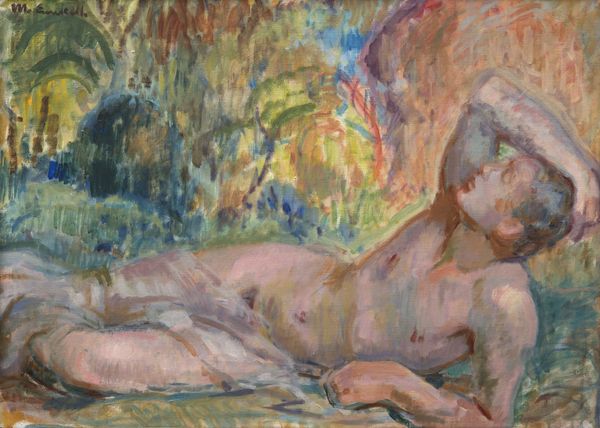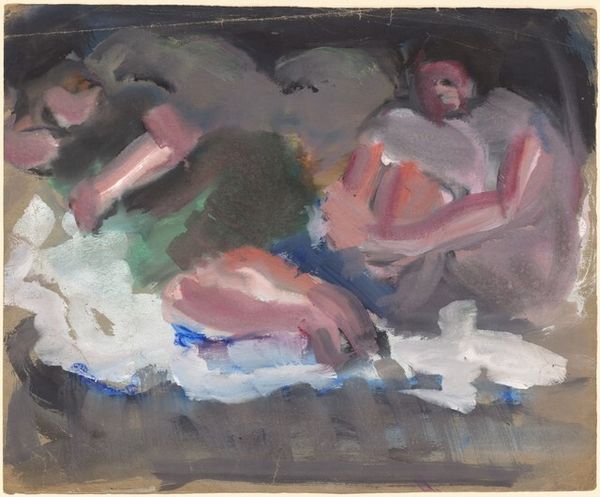
#
abstract expressionism
#
acrylic
#
abstract painting
#
possibly oil pastel
#
oil painting
#
bay-area-figurative-movement
#
fluid art
#
acrylic on canvas
#
underpainting
#
paint stroke
#
painting painterly
#
sitting
Copyright: Elmer Bischoff,Fair Use
Editor: This is Elmer Bischoff's "Woman Putting on Stocking," created in 1966. It's striking how raw the application of acrylic is; you can really see the strokes and almost feel the texture of the paint. What stands out to you in terms of its materiality or the process of making it? Curator: I'm immediately drawn to how Bischoff foregrounds the act of painting itself. Notice how the visible underpainting peeks through, particularly in the background. The "abstract expressionism" tag hits home, here. How do you think Bischoff is intentionally playing with the flatness of the canvas against the implied three-dimensionality of the figure? Editor: That's a good point. The flatness, especially in the blocky areas of color around the figure, keeps reminding you it's paint. Is he challenging traditional painting by exposing its construction? Curator: Precisely. Consider also the choice of subject matter. A woman putting on a stocking. How does elevating such a mundane, private act into high art – an oil painting in a gallery – shift our understanding of labor and the female body? Editor: It’s almost defiant, turning everyday life into something worthy of artistic attention and consideration of display and labor... very relevant for feminist thought! Curator: Exactly. Bischoff makes visible the usually invisible work of both artistic production and the private lives of women, which society consumes as representations. Editor: This has shifted my thinking a lot! Seeing how the visible brushwork and the choice of subject connect to broader ideas about labor really opened my eyes. Curator: Agreed! Recognizing how materials and production shape our understanding of art, even seemingly simple images, is key.
Comments
No comments
Be the first to comment and join the conversation on the ultimate creative platform.

